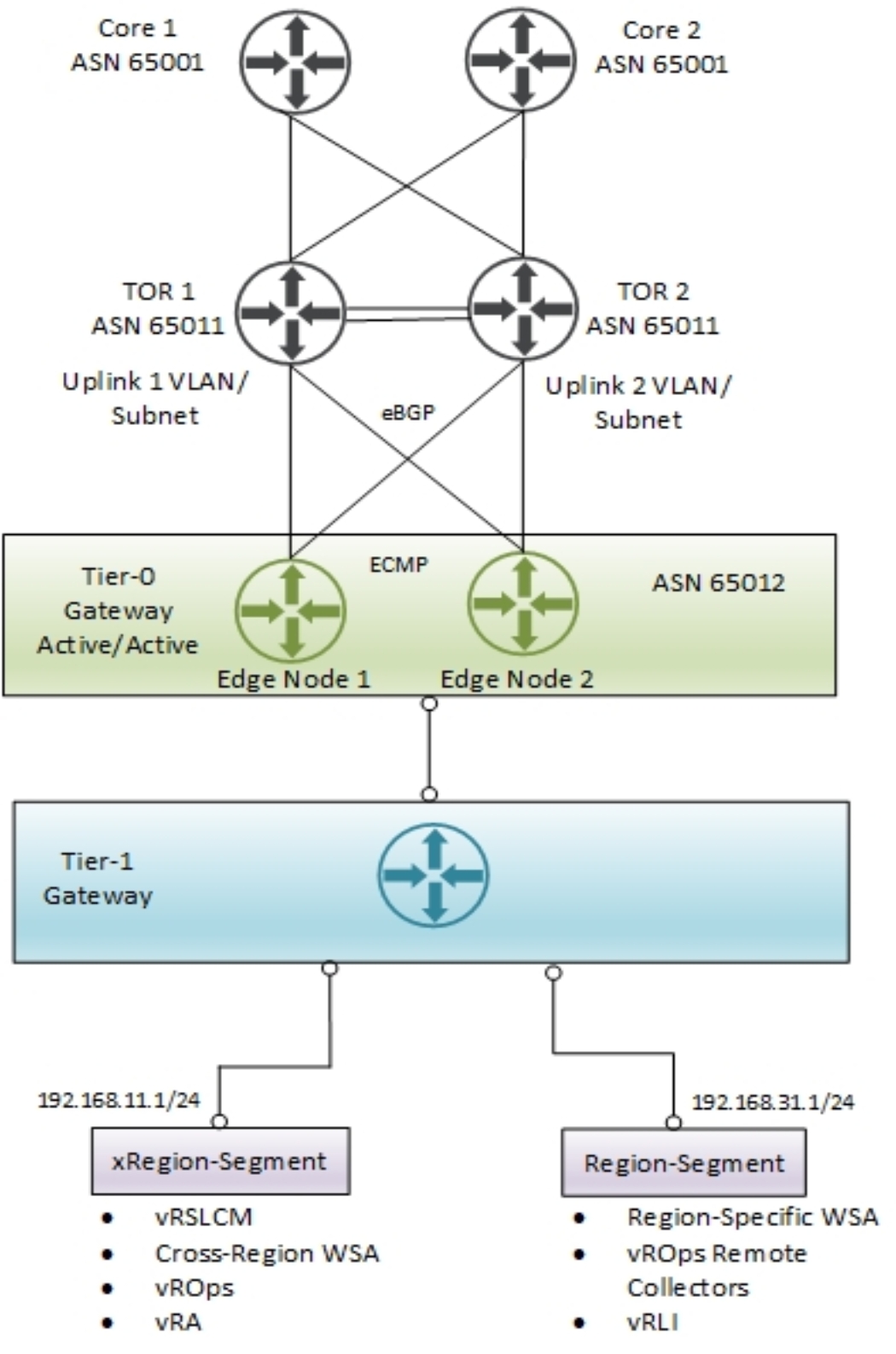Home > Integrated Products > VxRail > Guides > Architecture Guide—VMware Cloud Foundation 5.1 on VxRail > NSX Edge north-south routing design
NSX Edge north-south routing design
-
The NSX Edge routing design is based on the VCF design (see VMware’s Network Design for the NSX Edge Nodes for the Management Domain). A Tier-0 gateway is deployed in active/active mode with ECMP enabled to provide redundancy and better bandwidth utilization. Both uplinks are used. Two uplink VLANs are needed for north-south connectivity for the Edge VMs in the Edge Node cluster. The dedicated uplink profile that is created for the Edge transport nodes defines named teaming policies. These policies are to be used in the Edge uplink transport zone and in the segments that are created for the Tier 0 gateway and used as a transit network to connect the Tier 0 interfaces. The named teaming policy allows traffic from the Edge Node to be pinned to an uplink network/VLAN connecting to the physical router. BGP provides dynamic routing between the physical environment and the virtual environment. eBGP is used between the Tier-0 Gateway and the physical TORs. An iBGP session is established between the T0 Edge VMs SR components.
VCF v4.3 and later support static routes if BGP is not a viable option for the customer.

Figure 32. Mgmt WLD Edge Node north-south routing design
